Krishna Janmashtami is one of the most important Hindu festivals that people across India and the world celebrate with great enthusiasm. The festival commemorates the birth of Lord Krishna, the eighth incarnation of Lord Vishnu, who played a crucial role in shaping the course of the Mahabharata and delivering the Bhagavad Gita’s teachings. Krishna Janmashtami is not only a religious event but also a celebration of love, life, and devotion. Below are 10 big facts about this festival, explained in simple language.
1. Krishna Was Born at Midnight in Mathura
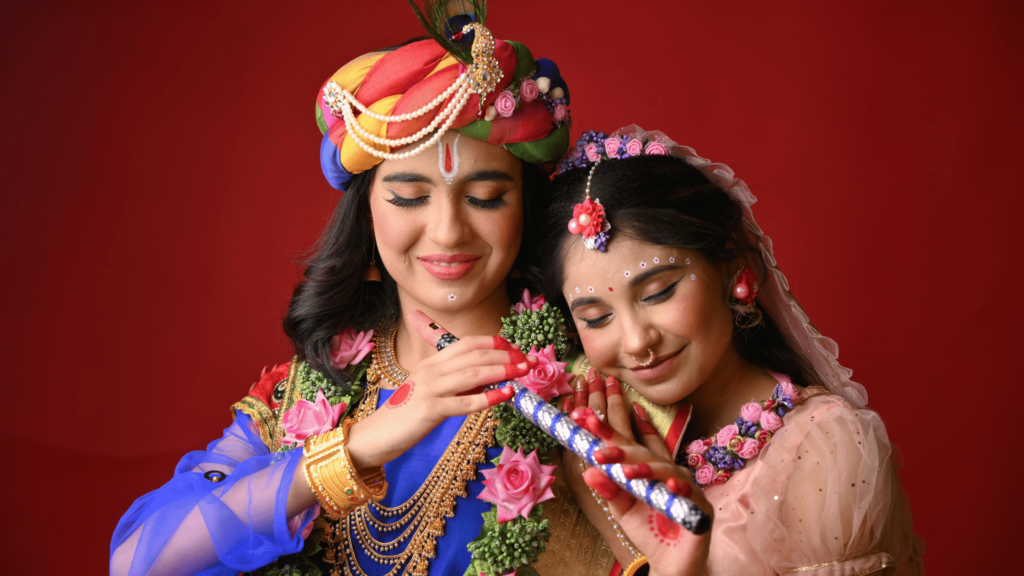
Krishna was born at the stroke of midnight in a prison cell in Mathura, under extremely difficult circumstances. His parents, Devaki and Vasudeva, were imprisoned by his evil uncle Kansa, who feared that Devaki’s eighth son would one day kill him. At the time of his birth, the gods intervened. The prison guards fell asleep, the gates opened on their own, and Vasudeva carried the newborn Krishna across the Yamuna River to Gokul, where Yashoda and Nanda raised him. This midnight birth is why Janmashtami celebrations begin at dusk and reach their peak at midnight.
2. People Fast All Day and Break Their Fast at Midnight
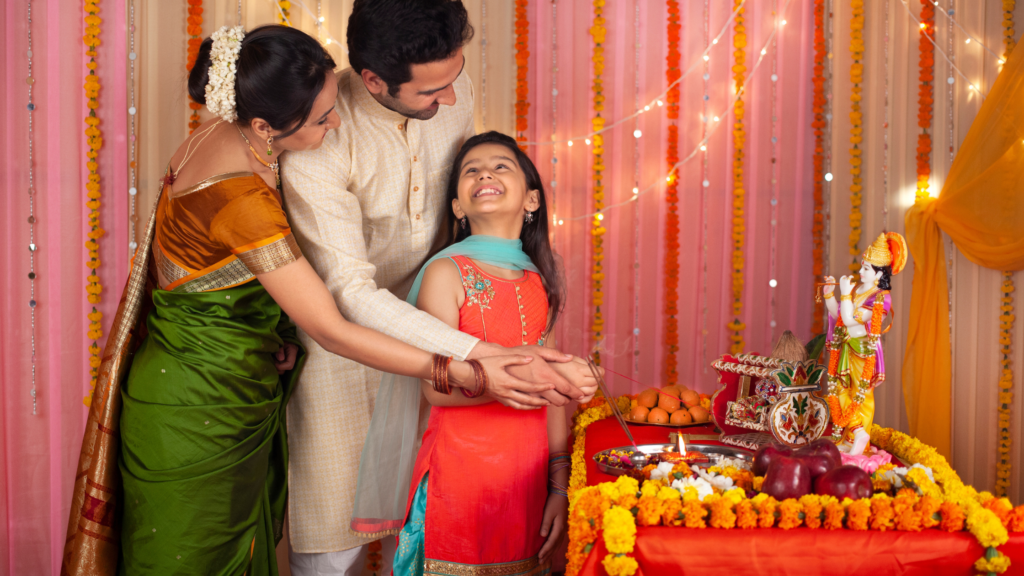
Fasting is an important part of Krishna Janmashtami for devotees. Many Hindus observe a fast throughout the day and break it only after midnight, when Krishna was born. They eat simple foods such as fruits, milk, and water, as a form of devotion and self-discipline. After midnight, they break their fast with a feast of offerings that include sweets and other delicacies dedicated to Lord Krishna.
3. Dahi Handi Is a Popular Tradition During Krishna Janmashtami
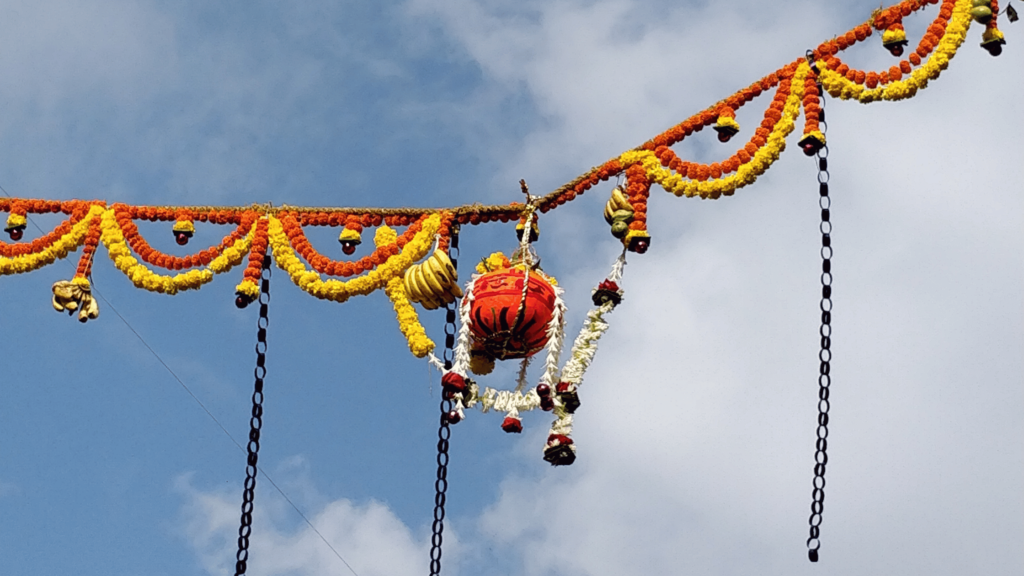
In Maharashtra, especially in Mumbai, the Dahi Handi celebration is a big part of Janmashtami. Krishna, as a child, loved butter and curd so much that he often stole it from the pots hung in people’s homes. To commemorate this playful aspect of Krishna’s personality, people hang a pot filled with butter, curd, or other goodies high above the ground. Groups of young men, known as Govindas, form human pyramids to reach and break the pot. It’s a thrilling and fun event that draws huge crowds.
4. Rasa Lila Performances Highlight Krishna’s Playful Love
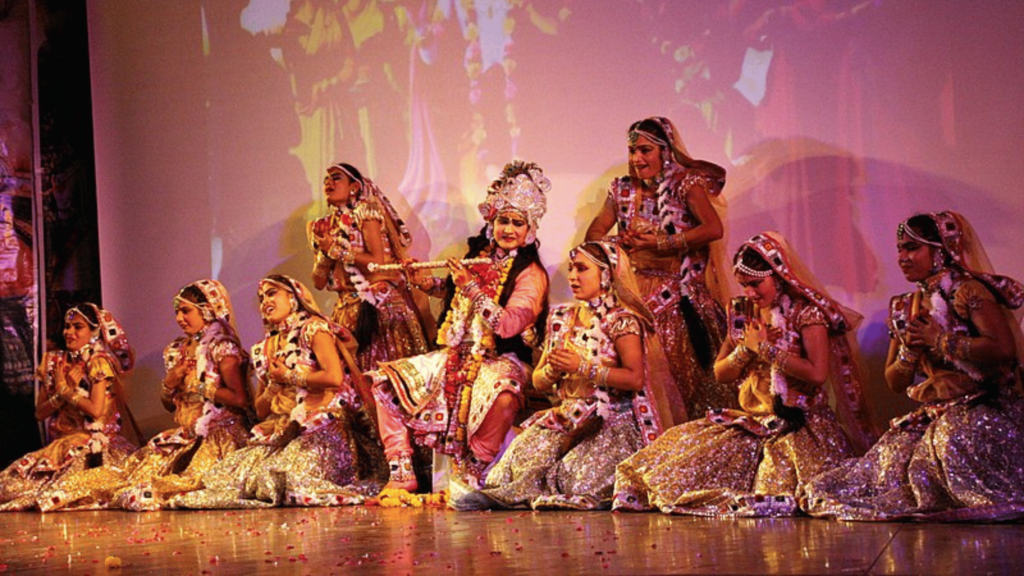
Rasa Lila, which means “the dance of divine love,” is another important part of Krishna Janmashtami. People in places like Vrindavan and Mathura reenact scenes from Krishna’s life through performances and plays. Rasa Lila highlights Krishna’s playful interactions with the gopis (cowherd girls) and his deep love for Radha. These performances remind devotees of Krishna’s divine nature and his message of love and devotion.
5. Temples Get Decorated with Flowers, Lights, and Rangolis
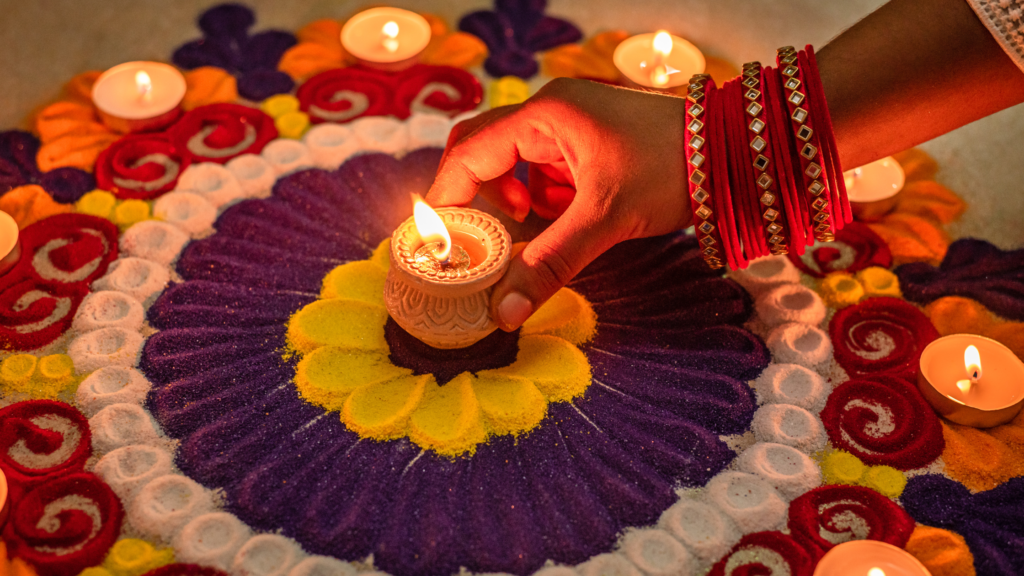
During Krishna Janmashtami, temples dedicated to Krishna undergo grand decorations. People adorn the temples with colorful flowers, twinkling lights, and elaborate rangolis (patterns made with colored powders). The image or idol of Krishna is dressed in new clothes and jewelry, and devotees gather to offer prayers and perform the abhishek (ritual bathing of the idol with milk, curd, and honey). This festive atmosphere is filled with music, chants, and devotion.
6. Krishna Janmashtami Is Celebrated All Over India with Regional Differences
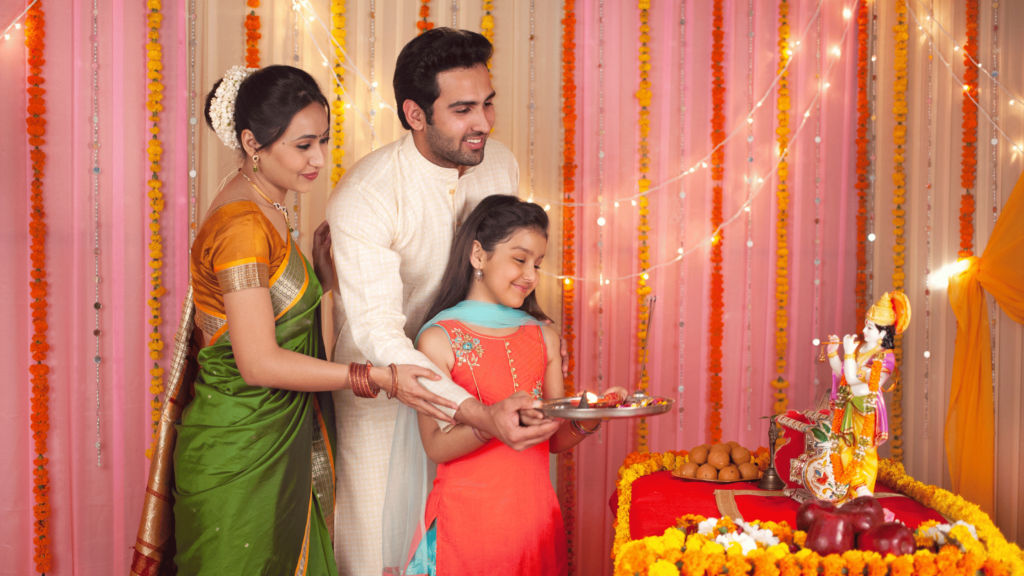
People celebrate Krishna Janmashtami across India, but the way they do it varies from region to region. In North India, especially in Mathura and Vrindavan, the festival is celebrated with grandeur, with massive crowds flocking to temples. In Maharashtra, Dahi Handi takes center stage. In Gujarat, Krishna’s childhood home, people hold long prayer services and decorate temples with lights and flowers. South Indian households draw small footprints in their homes to symbolize Krishna’s entrance.
7. Midnight Aarti Marks the Moment of Krishna’s Birth
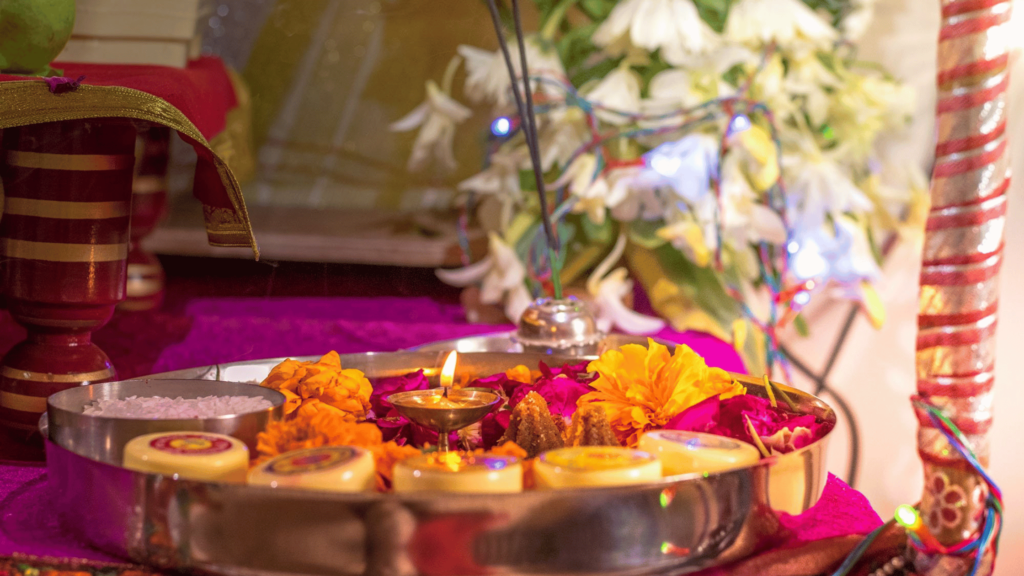
The most important part of Krishna Janmashtami is the midnight aarti, which marks the moment Krishna was born. Devotees fill temples, homes, and community centers to sing bhajans (devotional songs), recite prayers, and perform aarti (a ritual in which light from a lamp is offered to deities). This moment is seen as the most auspicious, with people celebrating Krishna’s arrival into the world and into their hearts. The atmosphere becomes joyous with the ringing of bells, chanting of mantras, and blowing of conch shells.
8. People Celebrate with Singing, Dancing, and Chanting
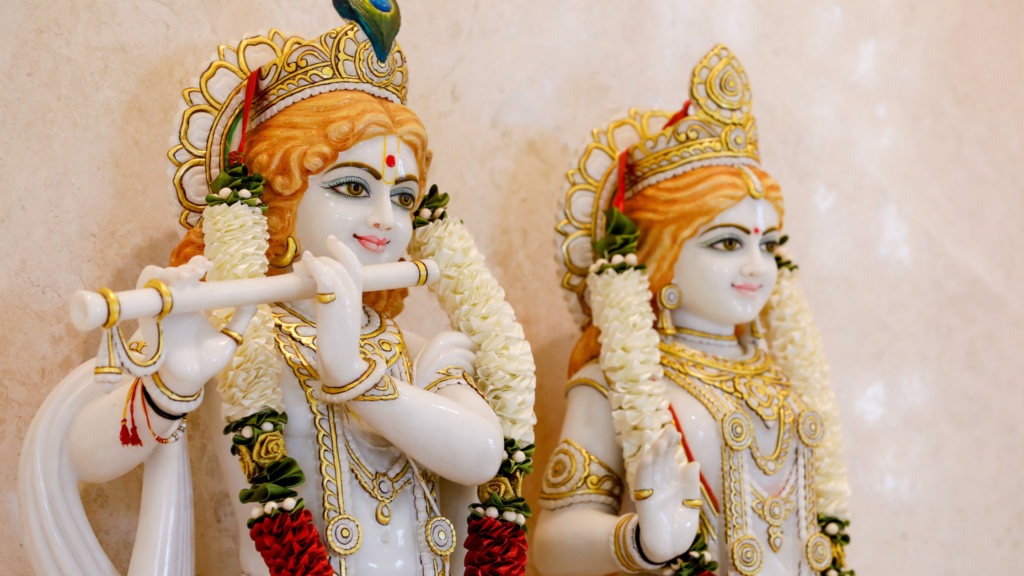
Krishna Janmashtami is not a quiet festival. People celebrate with lively singing, dancing, and chanting, all in praise of Krishna. Groups of devotees come together to sing kirtans (devotional songs) and bhajans, dance in temples and homes, and chant “Hare Krishna” throughout the night. The energy during these gatherings is contagious, with everyone joining in to celebrate Krishna’s divine playfulness and love.
9. Children Dress Up as Little Krishna On Krishna Janmashtami
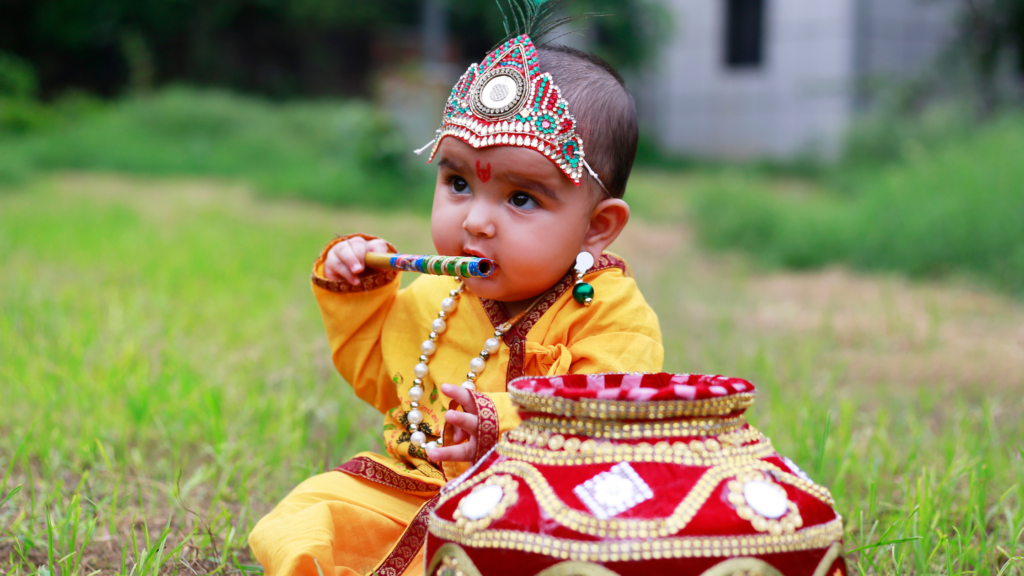
One of the most endearing aspects of Krishna Janmashtami is seeing children dressed up as little Krishna or Radha. Parents dress their children in colorful clothes, often with peacock feathers, flutes, and jewels, to resemble the child Krishna. These adorable representations of Krishna symbolize the love and innocence that he embodies, and they add a special touch to the celebrations. Many schools and communities hold competitions and events where children dressed as Krishna and Radha reenact scenes from his childhood.
10. Krishna Janmashtami Reminds Us of Devotion and Love

At its core, Krishna Janmashtami is about devotion and love for God. Krishna’s teachings emphasize the importance of living a life filled with love, righteousness, and devotion. The festival serves as a reminder of the lessons Krishna taught through the Bhagavad Gita and his divine acts. Whether through fasting, praying, or celebrating with dance and music, Janmashtami brings people closer to Krishna and allows them to express their love and gratitude for his guidance.


